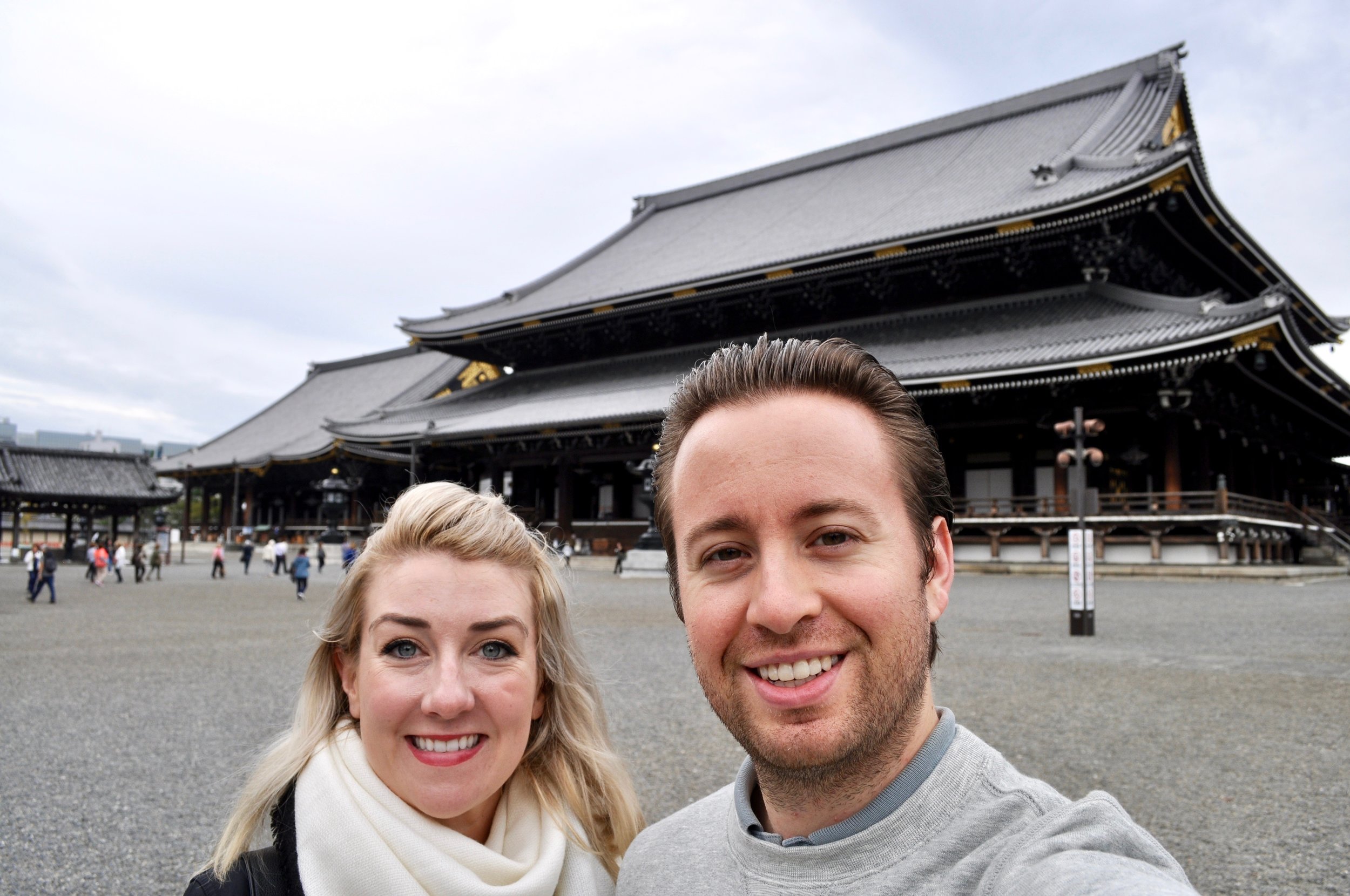
Our Trip to Kyoto
One of our best trip planning decisions was to take a side trip for two nights to Kyoto. A wonderful medley of very old and new, Kyoto was Japan’s capital for centuries up until 1868. It was spared during the bombings of WWII, therefore much of the country’s ancient past and glimpse at the way of life has been preserved for posterity. Here is how we got there, where we stayed and what we saw.
Shinkansen – If you decide to take the train into Tokyo from the airport, and are also planning on a bullet train (Shinkansen) ride to at least one other city, Japan Rail Pass is a great deal. It does not cover fare for the Tokyo Metro, but you can get unlimited use on the bullet train and JR Railway system. Trains in Japan are impeccably timely and well-run. For the bullet train, you can go to the station the day before to reserve a seat with your Japan Rail Pass, but you can also just show up and board one of the unreserved cars.
Passengers
Hotel Kanra – This hotel was such a gem, and maybe the loveliest place we have ever stayed. From the greeting with hot towels and tea at check-in, to the abundance of gorgeous flowers, and fine dining, I could not recommend it highly enough. Each room has a gated entryway before the room door where you are asked to remove and keep your shoes before entering. Shoji screens covered the windows that we could slide open for a view of the Buddhist temple across the street. There are two restaurants in the hotel, one an Italian kitchen with traditional wood-fired Neopolitan pizza and the other a traditional Japanese Teppan Yaki grill where you watch your food being prepared by the chef right in front of you. Also, we took advantage of the beautiful yukatas, lightweight kimonos, in our room (but had to watch a YouTube video to learn how to properly tie the miles-long obi waist belt!).
Entry flower display
Café and gift shop in the lobby
Gorgeous flowers at one of the hotel’s restaurants
Pondering room service in a yukata
Morning tea
Fushimi Inari-taisha – Fushimi Inari-taisha is a Shinto shrine dedicated to Inari (represented by the messenger fox). The 10,000 vermillion torii gates line the pathways of this shrine which snakes up a mountain, also called Inari. The effect of the thousands of torii is quite striking, and as the crowds thin out as you keep climbing towards the top of the mountain, it is quite peaceful. There are several off-shoots from the main pathway with smaller shrines, each displaying statues of messenger foxes. You can also see many, many golden orb-weaver spiders hanging out on their triple-layered webs. We ventured off the path to one of the shrines and a black and orange cat ran up to us! We’re pretty sure it was an ancient sentry due to its coloring and obvious resemblance to the foxes.
Symbolic sake barrel offerings (empty) outside of shrine
Vermillion torii
Shrine foxes
Golden orb-weaver
Black and orange shrine cat
Kinkaku-ji – Also known as the Golden Pavillion, it is a Zen temple which is layered in gold leaf. The reflecting pond doubles the golden impact as it glows on the surface. While the temple was burned down in the 1950s by a mad monk, it was rebuilt to replicate the original structure built in 1408. The gardens surrounding, however, have been preserved since that time.
Golden Pavillion
The most beautiful admission tickets
Kinkaku-G
Nara Park Deer – Using our Japan Rail Pass, we hopped on the train for a 45 minute ride to Nara to see and feed the deer. According to folklore, the deer are sacred and had enjoyed divine status for centuries. Now they are considered a national treasure and are protected within Nara. There are vendors who sell “deer cookies” for 150 yen and if you are holding them, prepare to have a lot of new friends. They have been conditioned to bow before you for a cookie and they will gently take it from your hand (although for some, it’s more of an aggressive head bunt).
Rainbow glass at Nara Station
Buying cookies
Sweet mama deer
Baby deer and mama deer
Nara deer and cherry blossoms manhole cover
Higashi Honganji Buddhist temple



















